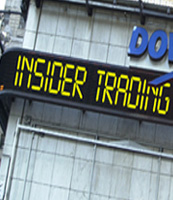LIVE TRADING ROOMS Have Advantages
 Many day traders and speculative investors have tried their luck using live trading rooms. In these rooms subscribers are given multiple real time trading ideas by live and in some cases professionaltraders. By subscribing to one of these internet based platforms, subscribers not only have participated in real time equity ideas, but Forex and S&P futures plays as well.
Many day traders and speculative investors have tried their luck using live trading rooms. In these rooms subscribers are given multiple real time trading ideas by live and in some cases professionaltraders. By subscribing to one of these internet based platforms, subscribers not only have participated in real time equity ideas, but Forex and S&P futures plays as well.
Well how do they work ? Live trading rooms frequently offer free trial memberships to induce interested traders into becoming paid members. Some of the more established sites usually offer free trial that range from 1 to 7 days. While the lesser known operations will often offer a free subscription for as long as a month.
Although I am currently not subscribing to any live trading rooms, I have in the past. Not only as a free member, but as a paid subscriber as well. So I will touch on some of my experiences with live stock rooms with these unnamed outfits below :
I’ll start on a positive note, and one plus of using some live trading rooms is the access to breaking news. However, most don’t offer it. Especially the sites that have lower membership fees. We all know how tough it is to efficiently watch a Level 2 screen and either keep an eye or ear on the tube to find out what David Faber or Jim Cramer is saying. It’s even harder for some to focus on trading when listening to the constant burst of information that comes through the internet based squawk box news services that so many traders use for news now. Especially if you are scalping or attempting to rebate trade. So having a one stop trading ideas/news service where you can just simply just watch your monitor can often reduce distractions.
Another plus of subscribing and taking ideas from others is that there are actually a few solid, profitable traders working for these websites. I can recall three individuals that I once followed that had tremendous prolonged hot streaks, and all of them had different styles. Now you are probably asking yourself this question right now. If John Doe from XYZ Trading is making so much money then why is he giving out ideas in a live trading rooms ? The answer is pretty simple. Many of these traders handle their own account’s and supplement their income with member subscription fees and purchases of add on products, banner ads etc. Keep in mind that it doesn’t take very long for a tech savvy person who trades professionally, to post a trade and it’s entry/exit points on a platform, and maybe follow it up with a quick blurb on the stock. The downside for the subscriber is that the person you are following is often in a profitable trade before you act.
On the flip side there are negatives too. Some live trading rooms do a better job at advertising than others, and a particular site caught my eye during a Google search. I signed up for a free membership, and as usual, I followed their trades for a couple of weeks without acting in my own account. What I found with this live trading rooms (Which is still in operation) is that they constantly recommended and scalp plays in less liquid ultra high beta, stocks that were over $100 and often over $200 per share. Now this strategy might sound like your cup of tea, but many veteran day traders preach to stay away from names that are under $5 and over $100 for the reasons I mentioned above. Liquidity and volatility. Now I am not saying not to trade stocks that fall under or above the above mentioned ranges. We issue alerts on low priced names all of the time. However, our time frame isn’t based on a 5 minute holding period.
LIVE TRADING ROOMS Suppply More Content
Here is why these live trading rooms use these high priced stocks as picks and why it’s almost impossible to scalp them consistently. Especially in choppy markets. It sometimes only takes 5k or 10k shares of market orders to move some of these small and mid cap names higher or lower by $1, $1.50 or even $2. Now if the site can get a few of those type of trades off in a day, they will mount some monster compounded percentage returns. But, here is the catch. You regularly couldn’t get filled at the suggested entry level, and the last time I checked, no investor has ever become rich by paper trading. I often saw this particular trading rooms issue a sell alert a few minutes later after the recommended name traded only 2k shares or so. It became obvious that this trading rooms was being run by professional paper traders. So I stayed away, and you should aviod these types of subscriptions too.
Another detractor of live trading rooms is using one with too big of a following. There is one site that I have used and respect, but they have so many subscribers that they often move fairly liquid NYSE stocks .10 or .15 cents in less than a minute when the projected profit was only .50 cents or so. So it’s very important to remain disciplined and pass on the trade when this happens.
I’ll finish with two final bits of advice. First, if you are interested in day trading and are looking for a content stream of ideas sign up for free trials, but look for those who provide additional content. But don’t jump in quickly, watch them for a while before you facilitate a trade, and see if they fit your individual style. For instance some are better at scalping than others, and there are others who trade the open better than they trade the close etc. Just look for a match that fits.
Lastly, and most importantly, if you happen to find a good site for your style, make sure you are funded well enough to take advantage of scaling out of profitable positions. In other words, many of the web traders often exit winning trades in 1/4 pieces. The reason for this is to hold on to the last profitable lot for as long as possible with little or no risk. Usually using a stop order at or slightly above the initial purchase price. Holding on to a final small position puts you in a position for a great percentage gain, and one good trade can cancel out some of the smaller losses you have taken during the month. But to play the market this way you have to be in a position to buy at least 400 shares of stocks over $50 and under $100. If you can’t, the inability to scale out can cost you dearly. Any of the live trading rooms that are worth their salt embrace this trading style.
Get LIVE TRADING ROOMS Updates from our FREE eMail List
 Day trading is often a much debated subject. Can it work ? Yes, but only for those who have mastered the discipline and remain extremely discipline. In theory types of equities can be day traded. However, the overwhelming majority of market mavens are in agreement that day traders should stick with the more liquid names.
Day trading is often a much debated subject. Can it work ? Yes, but only for those who have mastered the discipline and remain extremely discipline. In theory types of equities can be day traded. However, the overwhelming majority of market mavens are in agreement that day traders should stick with the more liquid names.

 Due to legal issues, the term
Due to legal issues, the term  Many day traders and speculative investors have tried their luck using
Many day traders and speculative investors have tried their luck using 
